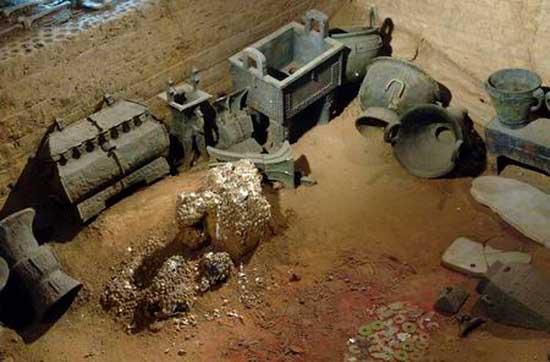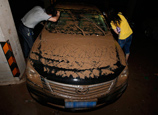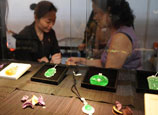
 |
| Yin Xu (CNTV) |
Date of Inscription: 2006
Assessment of the World Heritage Committee
Yin Xu in Anyang City is China's first capital city site from the late Shang Dynasty that has a written history and was verified with archaeological excavations. With its important historical, cultural, scientific and artistic value, it has become an important milestone during the development of human civilization. Yin Xu's status as world cultural heritage will be more conducive to the protection of the precious historical and cultural heritage of mankind.
Chinese name: Yin Xu
English name: Yin Xu
Based on the criteria C(ii)(iii)(iv)(vi) for selecting cultural heritage, Yin Xu was included in the World Heritage List in 2006.
Yin Xu is located in Anyang City, Henan Province, and is China's first capital city site from the late Shang Dynasty that is complete with a written history and was verified with archaeological excavations. A large number of exquisite cultural relics were unearthed there including oracle bone scripts, bronze wares, jade wares, earthen wares and bone objects, which comprehensively and systematically demonstrated the characteristic of the capital city in the Shang Dynasty some 3,300 years ago, and strongly verified the existence of an important historical period in the history of human civilization. In recent years, Yin Xu still had a large number of important findings, showing its significant archaeological potential.
The oracle bone scripts were discovered by chance. Wang Yirong, head of the Imperial College and epigrapher from the Qing Dynasty, discovered some strange ancient characters on some Chinese medicine called "keels" in 1899. After some research, he finally discovered that some of these keels were in fact tortoise shells and some were cattle shoulder blades. Later, people called the characters on the bones "oracle bone scripts."
Thousands of bronze wares were unearthed from Yin Xu and they can be divided into sacrificial vessels, weapons, tools, things used on carriages, and wood wares and funerary objects being buried with the dead. In the current collection, most are bronze sacrificial vessels including cooking vessels, wine vessels, plates, jars, pots and bowls. Most of the bronze wares have gorgeous decorative patterns, a symbol of profound social and historical significance. Among them, the most important is a mythical ferocious animal called a "Tao Tie," which has prominent features such as gigantic eyes, a broad mouth, large horns and body of a snake, a mixed image of totems.
















 Rainstorms flood more than 10,000 cars in underground garages in Wuhan
Rainstorms flood more than 10,000 cars in underground garages in Wuhan


![]()
